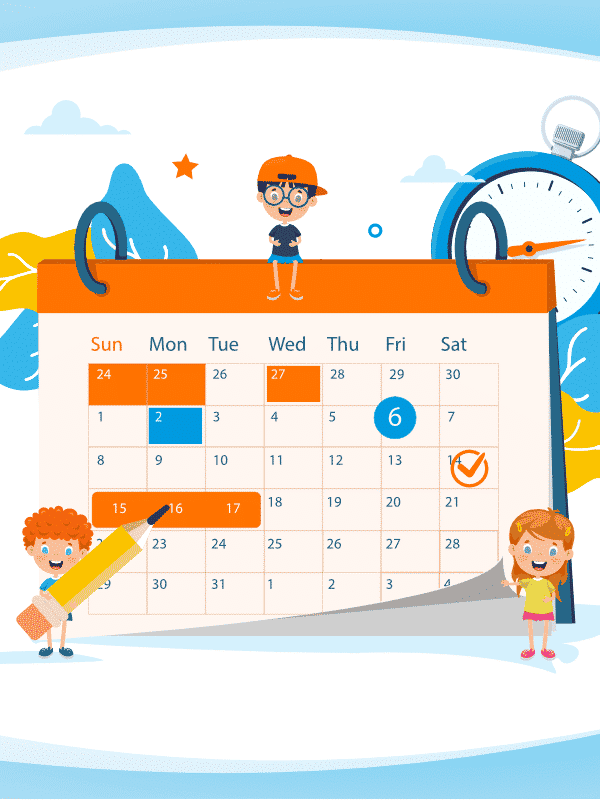According to the National Center for Educational Statistics, in the 2011-2012 school year, about 3% of the school-age population was homeschooled. Homeschooling is actually on the rise, and so are homeschool Spanish classes for kids.
According to the National Center for Educational Statistics, homeschooling has risen by 61.8% over the last decade. That translates to around two million kids being homeschooled in the United States. It’s no surprise during a global pandemic like what we have experienced in 2020 that more parents are choosing to educate their child at home.
While it may be an unpopular method for education, it is praised by many parents and experts. Ken Robinson, a teacher who was cited in a Business Insider article said “Engaging them as individuals is the heart of raising achievement.” He wasn’t specifically speaking about homeschooling, but perhaps a great way to engage children as individuals is by homeschool.
If you’re homeschooling or thinking about homeschooling, adding a foreign language such as Spanish would be beneficial for your child’s development and curriculum enrichment.
As a matter of fact, according to Family Education, “Spanish is the number-one choice of homeschool families due to its frequency of use.” But can you truly learn a foreign language like Spanish at home? What if you, the parent, don’t speak Spanish?
Children CAN Learn Spanish from Home
If you’re already homeschooling, you might be a little skeptical of the efficacy of language learning without a traditional classroom for that purpose. You’re right to be skeptical; only 1% of the American population that took a foreign language is competent in that language.
It turns out a traditional classroom may not offer as many benefits as we first think when it comes to learning Spanish. Remember that children learn languages through constant and consistent exposure and interaction (this is how they learned their first language, and that was pretty effective, right?).
They’ll need a lot of contact hours which aren’t given with traditional face-to-face classes. According to Family Education, total immersion of a language on a daily basis is the best way to learn it. They also mentioned that if that’s not possible, using the language on a consistent basis (like a couple of hours a week in an immersive environment) is the best way of learning a language.
Both of those methods are achievable through homeschooling, and so your child can absolutely learn Spanish at home.
An advantage of teaching a child a language at home is that you can offer them support and use creative means and ways of teaching that may not be available in the classroom.
What Options are Available for Learning Spanish at Home?
There are several options that you can use to teach your child Spanish at home. You can:
- Hire a Spanish Tutor for In-Person Learning
- Learn Spanish in Online Classes
- Teach Your Children Spanish Yourself (if you already speak it)
Hiring a Private Spanish Tutor for Homeschooled Students
Maybe you don’t speak a word of Spanish and want to leave it up to the professionals to teach your child Spanish. Having a Spanish tutor come into your home and teach your child Spanish is one option. Start as early as 6 months! It’s often seen as an effective way of learning a language.
Tutors are convenient as they’ll work with your schedule as best they can. They typically charge per hour, so they will likely be just as motivated as you are to schedule regular classes. Consistent classes are a great way to get fluent.
A good tutor is an expert in language learning and will be able to give your child the one-on-one attention they need to become fluent. They also will know how to keep your child engaged, which is important.
Honestly, at a young age, it’s more important just to find someone to play with your child in Spanish. No expert needed. 5 – 10 hours a week with a teenage Spanish-speaking babysitter will get you off to a great start without killing your wallet. And bring other kids into the picture to make the price even more enticing with group specials.
Live Online Spanish Classes for Homeschool Students
If you’re not comfortable with an in-person tutor then hiring an online tutor for homeschooled students is an option. Online tutors are more convenient and more reasonably priced since you do not have to pay for the travel time.
Online classes can be up to 80% less expensive and just as effective as in-person. Why pay for the travel time if it’s not more effective? Not to mention, for language acquisition, you really need that daily practice if possible.
It’s easier to jump online for 30 minutes a day, whereas it might not be possible to drive to a school, or a tutor’s home, every day for 30-minute classes. Very unrealistic for the busy schedule we all have. It would make learning Spanish a burden, instead of a pleasure.
Scheduling is definitely one of the biggest advantages of having an online tutor. I personally take my Japanese lessons (yes, I’m learning Japanese!) at 6 a.m., 4 days a week. I would not be able to do this in-person, as no one would want to meet me at 6 a.m. But my conversation Japanese teacher is in Spain, so it’s 2 p.m. in the afternoon for her. Perfect! Right before her kids get home from school. It works the best for everyone.
Not to mention, with online classes, you probably don’t have to have classes at the same time every week (a lot of companies allow you to book whatever time you want on the tutor’s online availability calendar). Having an online tutor also means less at-home preparation for a guest, and it’s definitely safer during a pandemic.
If you’re thinking of hiring an online tutor, maybe you could do it in a group setting. You could collaborate with the parents of other homeschooled children in the community and work in small groups with the tutor. This can be done with an online tutor or in-person.
At TruFluency Kids, we offer amazing small group Spanish classes or private Spanish tutors for homeschooled students. Our tutors know how to make your child fluent in Spanish. We offer online tutors for your convenience.
Online Spanish Language Software
You might have been told that there is great software out there that can teach your children a foreign language. While it can act as a supplement to learning, it is highly unlikely it can stand alone as a path to fluency. Studies show that kids do not get fluent from television, but rather, through interaction with others.
The truth is, the kids won’t likely learn anything other than a couple of words here and there. This software typically focuses on vocabulary words, which is great, however, it won’t provide the level of immersion that will lead to fluency.
Teach Your Child Spanish Yourself
Can you do it yourself? Many homeschool blogs suggest finding a suitable curriculum to guide you. You will need access to certain books especially those with an audio component (on Learning A to Z) and flashcards.
You can use resources like Little Pim or some other online software to help you teach the language.
The truth is, as a parent, you may find yourself having to teach a subject you’re not familiar with. As one homeschool blog puts it, “You will never know everything. Your kids will hopefully surpass you in knowledge, and that is your aim! You will serve your children best when you don’t just feed them facts but give them tools to teach themselves and learn from experts in a variety of fields.”
However, some homeschooled blogs weren’t convinced that that method will work with a language. One said, “So how do you teach a foreign language when you don’t speak it? You don’t. You can’t teach something you don’t know, but you can learn with your child and guide his studies.” We even have some parents taking Spanish lessons with their children for just $10 extra per class.
It’s very challenging, time-consuming to teach any subject much less a language you’re not fluent in. The issue with learning a language is that your children will need interaction. They need back and forth conversation and a lot of it if fluency in Spanish is your aim.
While watching videos and listening to books may be entertaining, those methods won’t teach the language. They only help to enforce what is learned through structured learning and conversation. We highly suggest some interaction with a live person if fluency is the goal.
What Should Homeschooled Spanish Look Like?
If you’ve decided that you’d like to add Spanish to your homeschooled curriculum, we have some tips.
- For online classes, we suggest no more than 6 students. This is because each student needs to be engaged and get a lot of time to talk.
- If the class is in-person, up to 10 can be okay, but 8 is preferred. The class should focus on listening to the teacher, storytelling, lots of pictures and animation, games, drawing and encouraging short phrases to start with.
Remember, your children listened for years before saying their first words in English. Be patient, but keep consistent classes. Especially during the summer! Don’t waste all that money and then forget it all in 3 months.
You have the unique job of providing positive reinforcement for your child especially if they start to lose motivation sometimes. There are also many things you can do to aid their language learning even if you do decide to hire a tutor. Your child may not realize it now but they’ll be thankful when they’re older and they’re bilingual.
Want to learn more? Let us know what you need! We’re here to help. You can also test the waters with a trial class. Get started today!


